Hawaiian History Month 2023 - Nā Kamehameha
September 19, 2023 Kawena Komeiji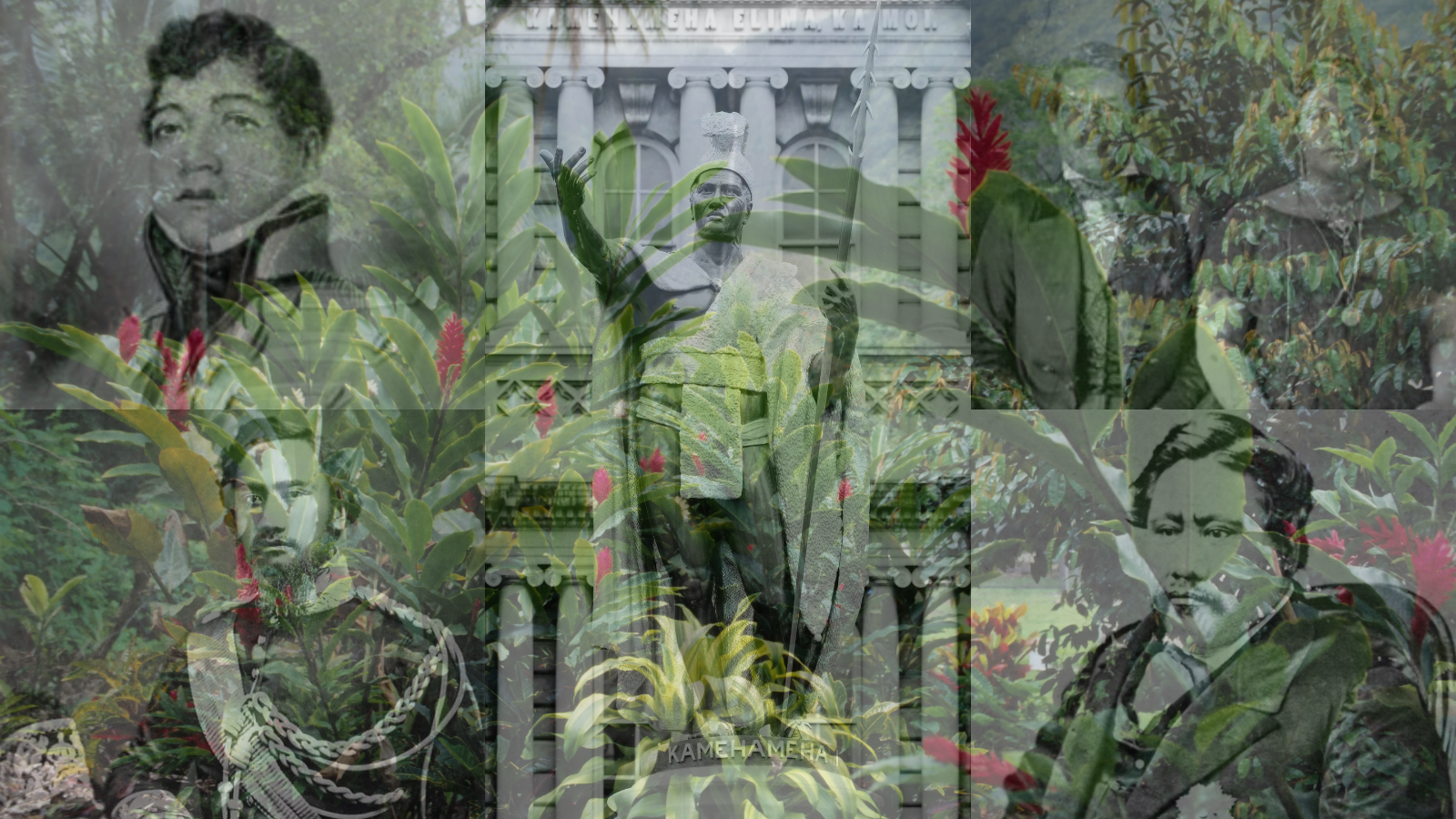
For Hawaiian History Month, we are celebrating the accomplishments of Kamehameha II – Kamehameha V. While many focus on Ka Naʻi Aupuni (Kamehameha I), his sons and their successors elevated the Hawaiian Kingdom to be on par with other nations of the world. The Kamehameha Dynasty came to an end with the death of Kamehameha V (Lot Kapuāiwa) as the Kingdom transitioned to voting for their next Mōʻī.
Kamehameha II
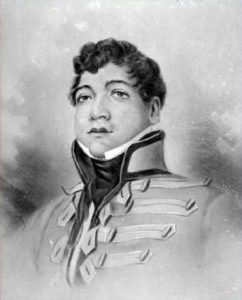 Kamehameha II, or ʻIolani Liholiho, was born to Kamehameha I and Keōpūolani on Hawaiʻi island though his care was entrusted to Kamehameha I’s favorite wife, Kaʻahumanu. ʻIolani Liholiho’s kapu status was much higher than his father’s and when he was only five years old, he was named heir to the throne.
Kamehameha II, or ʻIolani Liholiho, was born to Kamehameha I and Keōpūolani on Hawaiʻi island though his care was entrusted to Kamehameha I’s favorite wife, Kaʻahumanu. ʻIolani Liholiho’s kapu status was much higher than his father’s and when he was only five years old, he was named heir to the throne.
When Kamehameha I died in 1819, ʻIolani Liholiho assumed the name, Kamehameha II, and the throne under the guidance of Kaʻahumanu. One notable event of Kamehameha II’s reign was the ending of the kapu system. Although hesitant to do so, Kamehameha II eventually abolished the system but was met with resistance by several aliʻi, including Kekuaokalani. Kekuaokalani and his wahine, Manono, went to war with Kamehameha II and Kaʻahumanu. Although they were significantly outnumbered, it is said that Kekuaokalani and Manono fought a hard battle but in the end, Kamehameha II and Kaʻahumanu were victorious.
During a trip to England in 1824, both Kamehameha II and his wahine, Kamāmalu, fell ill. Kamāmalu died on July 8, 1824 and Kamehameha II soon followed on July 14, 1824. Their bodies were returned to Hawaiʻi in May 1825 and currently rest in Maunaʻala in Nuʻuanu.
Resources
- Kamehameha II: Liholiho and the Impact of Change by Julie Stewart Williams and Suelyn Ching Tune (ebook link)
- Ke Kumu Aupuni: The Foundation of Nationhood by Samuel M. Kamakau (print book link)
Kamehameha III
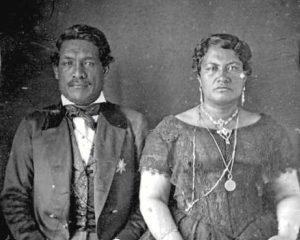 Kauikeaouli Kaleiopapa Kuakamanolani Mahinalani Kalaninuiakua Keaweaweulaokalani was born to Keōpūolani and Kamehameha at Keauhou on Hawaiʻi island around 1814. When his brother, ʻIolani Liholiho, died in 1824, Kauikeaouli was named heir to throne and took the name of Kamehameha III. Because he was still a young child, Kaʻahumanu was named his Kuhina Nui. After Kaʻahumanu died in 1832, Kīnaʻu assumed the position of Kuhina Nui.
Kauikeaouli Kaleiopapa Kuakamanolani Mahinalani Kalaninuiakua Keaweaweulaokalani was born to Keōpūolani and Kamehameha at Keauhou on Hawaiʻi island around 1814. When his brother, ʻIolani Liholiho, died in 1824, Kauikeaouli was named heir to throne and took the name of Kamehameha III. Because he was still a young child, Kaʻahumanu was named his Kuhina Nui. After Kaʻahumanu died in 1832, Kīnaʻu assumed the position of Kuhina Nui.
Kamehameha III had a very active reign and implemented measures such as land tenure and a Constitution. He was also able to secure recognition of the Hawaiian Kingdom as an independent nation from Great Britain, France, Germany, Belgium, and the United States of America.
One of his greatest accomplishments was encouraging Hawaiians to learn how to read and write, leading Hawaiʻi into becoming one of the most literate nations in the world. With a nearly 90% literacy rate, Hawaiʻi surpassed most European countries. This legacy was preserved through the Hawaiian language newspapers that were published from 1834 to 1948, which can still be accessed today online or in person at various archival repositories.
Kamehameha III passed away in 1854 and currently rests at Maunaʻala in Nuʻuanu. A statue of this extraordinary Mōʻī can be found at Thomas Square in Honolulu.
Resources
- Ke Aupuni Mōʻī by Samuel M. Kamakau (ebook link)
- Leveraging Sovereignty: Kauikeaouli’s Global Strategy for the Hawaiian Nation, 1825–1854 by Susan J. Corley (ebook link)
- “Literacy was Sought by the People” by Peter T. Young (blog post link)
Kamehameha IV
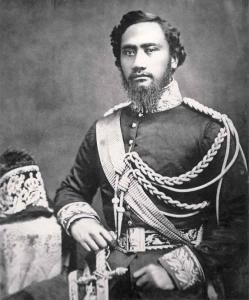 Alexander ʻIolani Liholiho was born to aliʻi, Kīnaʻu and Kekūanāoʻa. His mother, Kīnaʻu, was a daughter of Kamehameha I and his father, Mataio Kekūanāoʻa, was Governor of Oʻahu. Alexander Liholiho was then adopted by Kamehameha III and his wahine, Kalama.
Alexander ʻIolani Liholiho was born to aliʻi, Kīnaʻu and Kekūanāoʻa. His mother, Kīnaʻu, was a daughter of Kamehameha I and his father, Mataio Kekūanāoʻa, was Governor of Oʻahu. Alexander Liholiho was then adopted by Kamehameha III and his wahine, Kalama.
After being educated at the Chiefsʻ Children School, Alexander and his brother, Lot Kapuāiwa, traveled with Dr. Gerrit P. Judd to the United States, Europe, and France. He documented this long journey in a journal that you can still read today. During this journey, he and his brother were mistaken for slaves twice in the United States because of their darker complexion. Dr. Judd had to explain to people that he was actually the attendant for the two princes and not the other way around. These incidents shocked Alexander and Lot as they had never experienced racism before.
After Kamehameha III died in 1854, Alexander ʻIolani Liholiho became Mōʻī and assumed the name, Kamehameha IV. During his reign, he along with his wahine, Emma Naea Rooke, focused on healthcare and education for Hawaiians. When they were unsuccessful with getting the Legislature to fund a public hospital for Hawaiians, they personally lobbied private businesses and merchants and established The Queen’s Hospital, now known as The Queen’s Health System.
The King and Queen had one son, Prince Albert Edward Kauikeaouli Kaleiopapa a Kamehameha. Unfortunately, he would pass away in 1862 at only four years of age and his brokenhearted father, Kamehameha IV, would soon follow in 1863.
Resources
- Kamehameha IV, Alexander Liholiho by Ruby Hasegawa Lowe (ebook link)
- The Hawaiian Kingdom, Vol. II, 1854-1874 by Ralph S. Kuykendall (ebook link)
- The journal of Prince Alexander Liholiho; the voyages made to the United States, England and France in 1849-1850 (print book link)
Kamehameha V
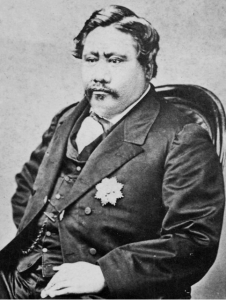 Lot Kapuaiwa Kalanimakua Aliiolani Kalanikupuapaikalaninui was born to aliʻi, Kīnaʻu and Kekūanāoʻa, in 1830. He was adopted by Nahiʻenaʻena but was raised by Ulumāheihei and Kaheiheimālie because Nahiʻenaʻena passed away in 1832. Like many aliʻi of the time, Prince Lot Kapuāiwa was educated at the Chiefs’ Children’s School and traveled with his brother, Alexander Liholiho, and Dr. Gerrit P. Judd to the United States, England, and France.
Lot Kapuaiwa Kalanimakua Aliiolani Kalanikupuapaikalaninui was born to aliʻi, Kīnaʻu and Kekūanāoʻa, in 1830. He was adopted by Nahiʻenaʻena but was raised by Ulumāheihei and Kaheiheimālie because Nahiʻenaʻena passed away in 1832. Like many aliʻi of the time, Prince Lot Kapuāiwa was educated at the Chiefs’ Children’s School and traveled with his brother, Alexander Liholiho, and Dr. Gerrit P. Judd to the United States, England, and France.
When Kamehameha IV died, Lot became Mōʻī Kamehameha V. One of his first acts as King was to propose a new constitution because he felt the 1852 Constitution was too limiting. He tried to convene a constitutional convention but when that failed, he drafted a new constitution himself and signed it into law in 1864.
Kamehameha V was a champion for traditional Hawaiian ways. He established the Hawaiian Board of Medicine for kāhuna lāʻau lapaʻau and had them document their medicines. Additionally, Kamehameha V also founded the Royal Order of Kamehameha and declared June 11th as Kamehameha Day, a holiday to commemorate his grandfather, Kamehameha I. More than 100 years later, the Royal Order of Kamehameha and Kamehameha Day are still observed and celebrated today.
Although he named his sister, Victoria Kamāmalu, as his heir, she passed away in 1866. It is rumored that he wished to name Bernice Pauahi Bishop, to whom he was formerly betrothed, as a new heir to the throne but she declined. As the last of the direct descendants of the Kamehameha line, Kamehameha V did not want to name an heir of lesser aliʻi status so he died without an heir in 1872, triggering the Hawaiian Kingdom’s first election of Mōʻī. Lot Kapuāiwa currently rests in the Kamehameha crypt at Maunaʻala.
Resources
- Kamehameha V: Lot Kapuāiwa by Rosalin Uphus Comeau (ebook link)
- The Hawaiian Mission Houses Digital Collections – Kapuaiwa Aliʻi Letters (collection link)
- Punawaiola – Kumukanawai i Haawiia e Ka Moi (1864 Constitution link)


